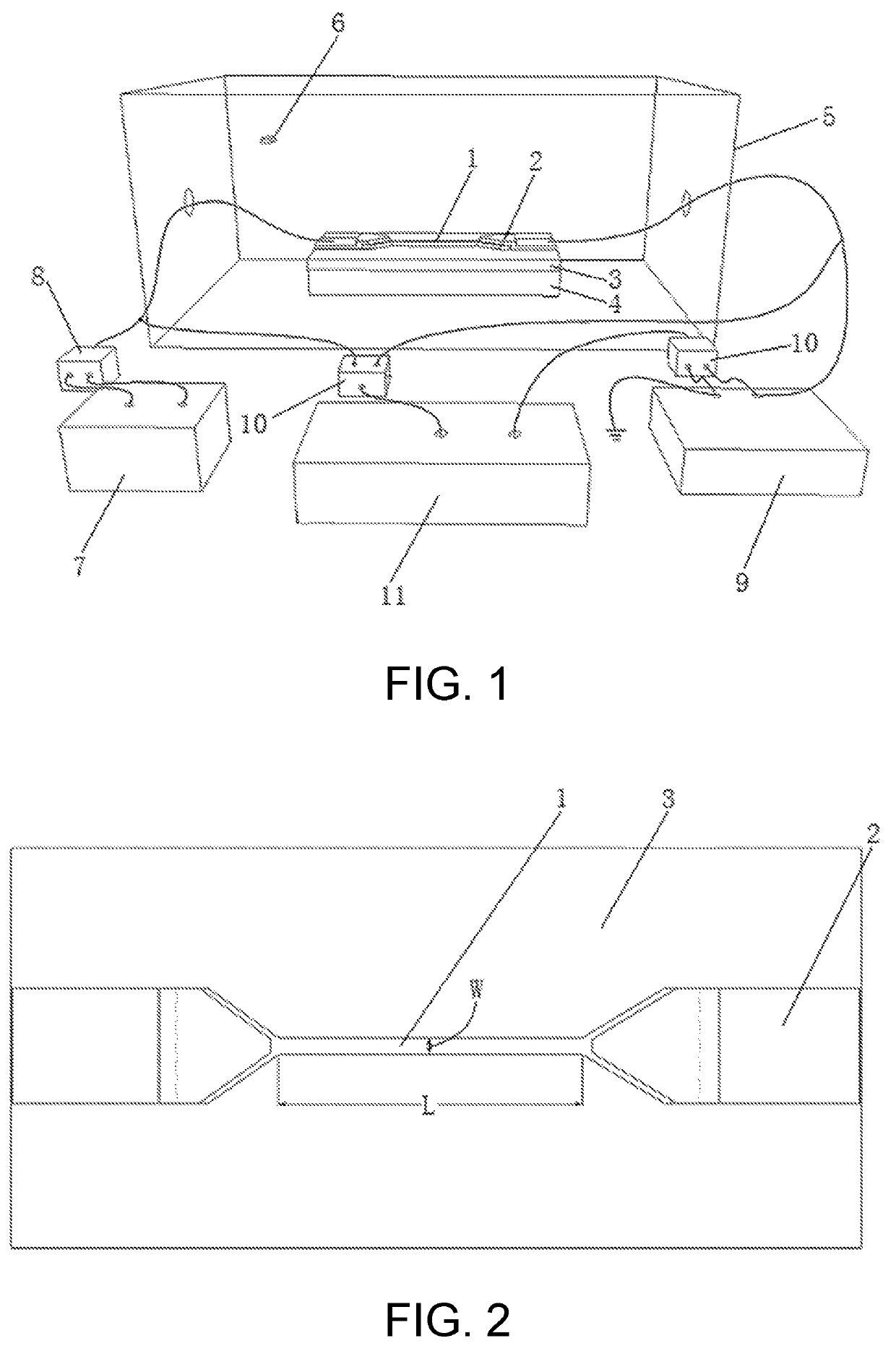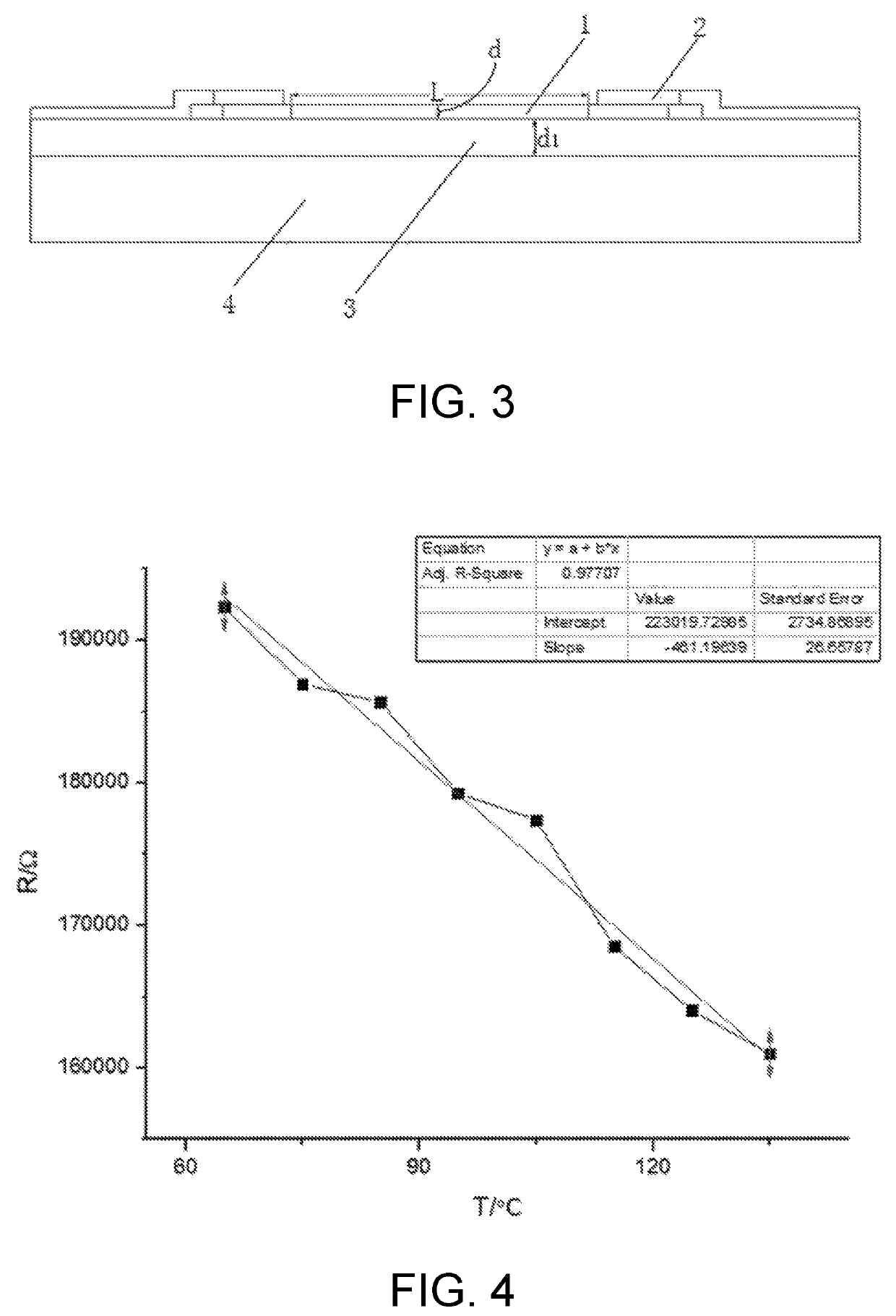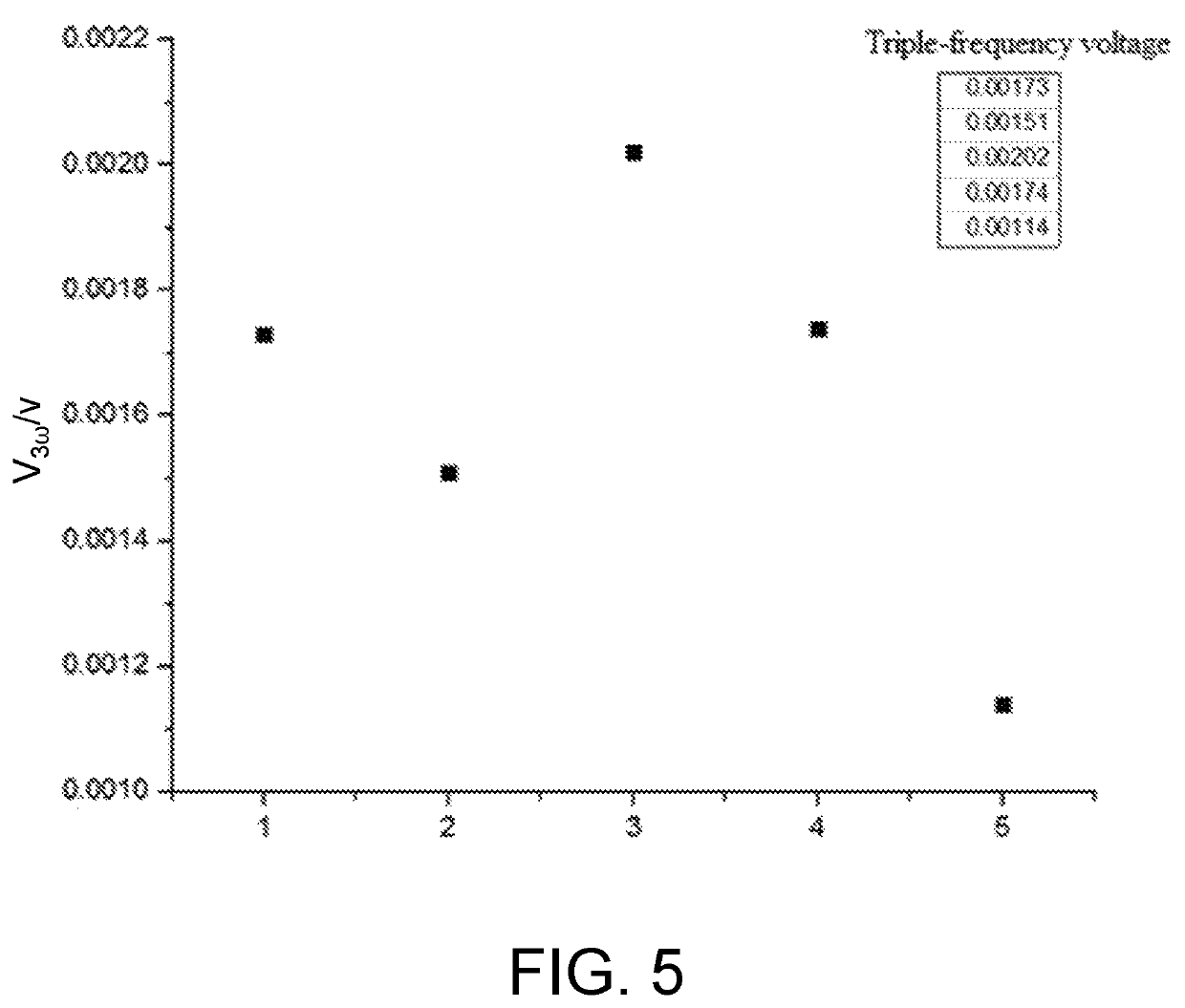Method and device for testing thermal conductivity of nanoscale material
a nano-scale material and thermal conductivity technology, applied in the direction of instruments, material heat development, heat measurement, etc., can solve the problems of difficult to realize the compatibility of materials, significant influence of test results, and difficulty in acquiring temperature distribution of materials and particularly of materials at nano-scale, so as to improve the method and accurately measure the thermal conductivity of each material.
- Summary
- Abstract
- Description
- Claims
- Application Information
AI Technical Summary
Benefits of technology
Problems solved by technology
Method used
Image
Examples
embodiment 1
[0048]An embodiment of the present disclosure provides a testing method for a thermal conductivity of a nanoscale material, including the following steps.
[0049]In step 1, a to-be-tested nanoscale material is prepared or placed on a substrate, and electrodes are plated at two ends of the to-be-tested nanoscale material, wherein the substrate includes a substrate medium layer and an insulating medium layer located on the substrate medium layer, and the insulating medium layer has a thickness d1 and a thermal conductivity κ1, and the substrate medium layer has a thermal conductivity κ2 and a thermal capacity c2; and a part, located between the two electrodes, of the to-be-tested nanoscale material is used as a part for a thermal conductivity test, and the part for the thermal conductivity test has a length L, a line width w and a thickness d.
[0050]The to-be-tested nanoscale material may be directly prepared on the substrate, or an existing to-be-tested nanoscale material is placed on t...
embodiment 2
[0067]As shown in FIG. 1 to FIG. 3, an embodiment of the present disclosure further provides a testing device for a thermal conductivity of a nanoscale material, which can realize the above testing method for the thermal conductivity of a nanoscale material. The testing device includes a heating furnace 5, a signal generator 7, a power amplifier 8, an adjustable resistance box 9, single-gain differential amplifiers 10 and a lock-in amplifier 11, wherein a substrate is arranged inside the heating furnace 5 and configured to place a to-be-tested nanoscale material 1 with two ends plated with electrodes 2, and the heating furnace 5 is internally provided with a temperature thermocouple 6; the signal generator 7 is electrically connected with the power amplifier 8, the power amplifier 8 is configured to be electrically connected with the electrode 2 at one end of the to-be-tested nanoscale material 1, the adjustable resistance box 9 is configured to be electrically connected with the el...
PUM
| Property | Measurement | Unit |
|---|---|---|
| thickness | aaaaa | aaaaa |
| thickness | aaaaa | aaaaa |
| thickness | aaaaa | aaaaa |
Abstract
Description
Claims
Application Information
 Login to View More
Login to View More - R&D
- Intellectual Property
- Life Sciences
- Materials
- Tech Scout
- Unparalleled Data Quality
- Higher Quality Content
- 60% Fewer Hallucinations
Browse by: Latest US Patents, China's latest patents, Technical Efficacy Thesaurus, Application Domain, Technology Topic, Popular Technical Reports.
© 2025 PatSnap. All rights reserved.Legal|Privacy policy|Modern Slavery Act Transparency Statement|Sitemap|About US| Contact US: help@patsnap.com



